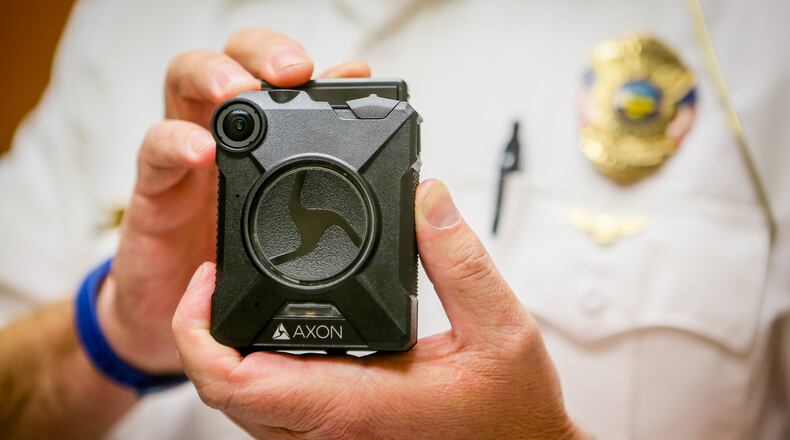“It’s down to two or three different models and our plan is to work through this systematically through the year, and get to a decision,” Bucheit said. “Our goal would be to make a decision on the product, on the equipment itself, build this program up and get it operational by the end of the year.”
Because of negotiations with companies and a variety of options with each company, he said he was unable to provide an estimate of how much it might cost to outfit his force that includes 115 sworn officers, a number that includes him.
The city in 2016 estimated officers would have the cameras in 2017. In 2018, Bucheit believed that was the year a decision would be made on the cameras. But because the city faced a large payment to replace its entire system, the body cams purchase had to be delayed.
One complexity in deciding which camera vendor to go with is the issue of storing the videos that may someday be needed to turn over as public records or as evidence for court cases, and the varying costs of that storage years into the future.
“From the trials we’ve conducted with the cameras, we know there’s going to be a sizeable amount of data that’s going to need to be stored,” he said. “What we need to decide is how best you manage that data. How do you store it? How do you retrieve it? How do you redact it (for privacy or other reasons)?
“The officers actually are the ones who have advocated for these cameras. They support the idea, the program.”
Such video can provide great amounts of insight into what happened during an incident, as was the case last year in deaths at the hands of police across the country that prompted Black Lives Matter protests, and also during this year’s mob invasion of the Capitol building in Washington, D.C.
Bob Harris, president of the South East Civic Association (SECA), which represents the city’s Riverview (Second Ward) and Jefferson (Fourth Ward) neighborhoods, is glad the city is getting body cams.
“I think Bucheit would do himself justice if he got the body cams, and if he had some type of citizens’ group that could investigate anything that went on with the police department,” Harris said.
City police cruisers have had their own cameras for more than a decade.
“The overwhelming amount of the time, it’s exonerated the officers in citizen complaints,” Bucheit said.
Witness accounts can be faulty, and video evidence can clarify situations. A friend of Bucheit’s last year contacted him to complain that an officer cited her for running a red light when she was certain she had not early one morning.
The department provided her a screen shot from the cruiser’s camera that showed not only had the light she drove under turned red for her, but the light facing the intersection’s other street had already turned green, Bucheit said.
About the Author

